How are the wolves in Białowieża Forest and where can they be found? These are the most common questions I get asked by visitors to the forest. The wolves here are some of the best studied in the world, making the answers to these questions lengthy but fascinating. In this article I’ll run you through some of the most prominent research findings realted to these questions.
As elsewhere in Europe, wolves in Białowieża Forest have had a fairly turbulent history. Over the past century, their numbers have varied dramatically, peaking after wars, and troughing as extermination programmes were introduced. Wolves were persecuted on and off, with particularly intensive persecution occurring in 1946-1960, at which point wolf numbers reached zero. Thankfully Białowieża Forest is connected to extensive tracts of wild forest in the east, and so wolves recolonized spontaneously as the extermination programme winded down. Wolf hunting was reduced down to negligible levels by the 1980s, and they became strictly protected in 1989. This strict protection regime has continued to the present day.
Status in Belarus: Wolves over Poland’s eastern border aren’t afforded the luxury of protection. Belarus has a national wolf extermination programme with a target population level of ca. 500 wolves (by comparison, Poland has total wolf population of around 2000 individuals). Wolf hunting even occurs in the Bialoveskaya National Park, the national park covering the Belarusian side of the forest. One of the few benefits of the international border fence that divides the forest is that Polish wolves don’t often cross into Belarus.
The Bialowieża Forest wolf population
There are four wolf families (packs) in the Polish part of Białowieża Forest. The number of wolves in each pack varies from year to year – depending on how may pups are born, and how many of these survive. Packs generally have 5-10 wolves – and so the population on the Polish side of the forest numbers 20-40 wolves. This may seem like a relatively small number, but in fact this seems to be the carrying capacity of the Polish part of the forest. Each family occupies around 200 km2, and defends this territory from other wolves.
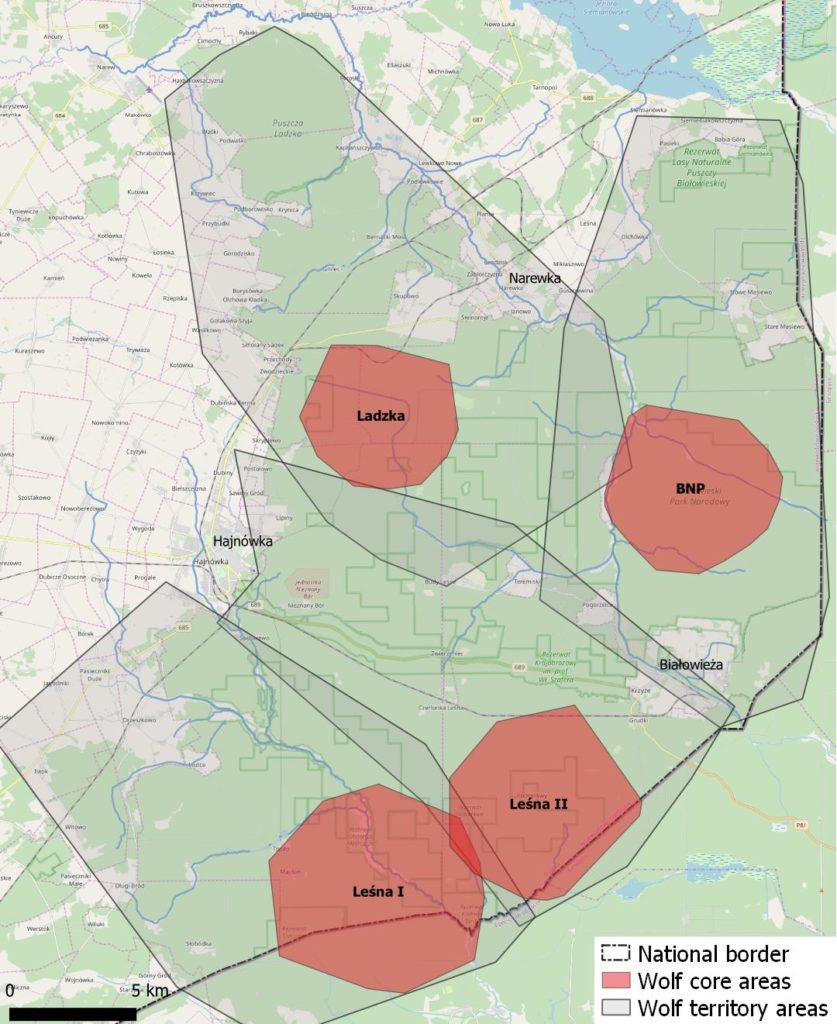
The wolf population on the Polish side of Białowieża Forest is remarkably stable. The population size and the distributions of the four wolf pack territories has more or less stayed the same for over 20 years. Now of course, the individuals within those packs have changed (wolves live up to 8-10 years in the wild). Interestingly, before this stable state emerged, a curious event happened. There used to be just one pack living in the south of the forest. But this family split in two – that’s why the two packs inhabiting this part of the forest, and which live side-by-side, are called the Leśna I and Leśna II packs. Since this split we’ve had four wolf families in the forest.
Their diet and ecological effects.
The diet of wolves in Białowieża Forest was studied extensively in the 1990s. It was found that to feed themselves, a wolf family in Białowieża Forest kills a prey on average once every couple of days. Similar to other areas in Europe, red deer were found to comprise the bulk of the wolf diet here (80% of the biomass wolves eat). Roe deer and wild boar make up most of the rest, with various smaller mammals like hares and beavers also being eaten occasionally. Larger species like moose and bison are killed very rarely, although it is known to happen. Since these diet studies were done, wild boar have been virtually wiped out in Białowieża Forest due to an African swine fever outbreak – so boar likely play a very minor role in the contemporary wolf diet.
Wolf hunting of prey species has several benefits for the forest’s ecology. By killing a share of prey populations, wolves limit prey population sizes, which helps reduce overgrazing of forest vegetation. They also tent to hunt weaker individuals, which helps keep prey populations healthy. Most importantly however, is that the mere presence of wolves in the forest leads radical changes in the behaviour of prey: prey alter their spatial behaviour and activity patterns in an attempt to avoid being eaten. You may have seen the (somewhat exaggerated) ‘how wolves change rivers’ video from Yellowstone National Park. These ecological effects of wolves are the study topic of our research group and are a subject I’ll cover in another post at a later date.
Spatial distribution & activity patterns.
Another study from the 1990s told us all about how wolves move around Białowieża Forest in space and time – in other words, where do they live and at what time are they active? Eight wolves were caught and equipped with telemetry collars. These devices allow you to track the movements and record the exact locations of the wearer in real-time. The telemetry data identified four wolf families living in four separate areas in the forest. It also found that wolves roam across the whole forest area, but spend most of their time in a so-called 50km2 ‘core area’ or ‘rendezvous site’ – this is the centre of their activity − the area a pack most often returns to to rest. These rendezvous sites are situated as far away from human settlements as possible. You can see the four core areas and territories on the maps above and below.
Wolf spatial distributions in Białowieża Forest were studied again recently by a close colleague of mine, Jakub Bubnicki. He used a huge network of camera traps to map the locations of wolves, lynx and herbivores in the forest. His results indicated that wolves still mostly still use the same parts of the forest for their core areas as in the 1990s.
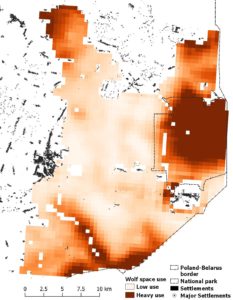
Wolves can be active throughout the day and night, but their activity peaks at dawn and dusk. These are the times of day when they hunt most often, as it is when their prey are active. Over the year, they travel on average around 25 km a day. But they travel a lot less in spring, the pup rearing season – when they spend more time in the vicinity of their dens and rendezvous sites nursing pups. By contrast, in Autumn/Winter they roam the farthest distances, when they use their territories in a more rotational way. (this strategy is related to intense patrolling and defense of their territory, but may also help to avoid prey becoming to accustomed to the presence of wolves in heavily used areas). Despite the varying activity patterns over the year, they still make use of their ‘rendezvous sites’ to rest at all times of the year.
Spotting a wolf
For your best chance of seeing a wolf, head in the direction of the core areas/rendezvous sites (marked red on the above maps) around dawn or dusk. Although the probability of seeing them is highest in the core areas, you can in fact see wolves anywhere in the forest, even on the meadows surrounding the villages. Just bear in mind that seeing wolves is quite rare – I see them only once or twice a year.
How to behave – Wolves generally don’t pose a danger to humans. The only attacks on humans in Poland have been by habituated wolves (those that have lost their fear of humans, e.g. due to feeding). Despite this, it’s worth maintaining basic precautions. Don’t attempt to approach a wolf (or wolf pack), and back away slowly if they begin moving towards you. Bear in mind that wolves have very poor eyesight. Quite often they can stop whatever they’re doing, and even stare at humans for quite some time, in an attempt to figure out what we are.
Wolf tracking
On your adventures through the forest, it can be great fun to track the footprints and territory markings of wolves. Wolves mark their territories with scats, urine and ground scratching to communicate their presence to other wolves. This serves as a signpost (or even warning) to other wolves to stay away. You’re most likely to find territory markings in the core areas and outer edges of wolf territories. Tracking animals is always most effective in fresh snow, when the tracks and markings are easily visible. But it’s possible to spot tracks all year round, just look out for them on forest tracks, particularly sandy ones. Scat deposition rates are consistent throughout the year. Whereas rates of urine markings and ground scratching are 2-3 times higher in October-January.
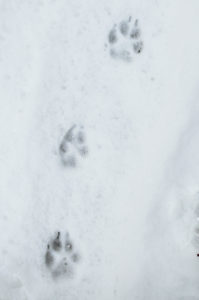
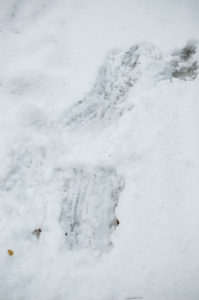
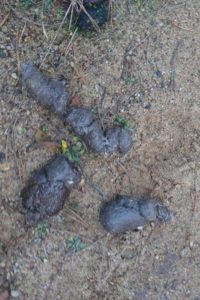
Wolf tracks, wolf scratchings and wolf scats
References and recommended reading
Schmidt, Krzysztof, Włodzimierz Jędrzejewski, Jörn Theuerkauf, Rafał Kowalczyk, Henryk Okarma, and Bogumiła Jędrzejewska. “Reproductive behaviour of wild-living wolves in Białowieża Primeval Forest (Poland).” Journal of Ethology 26, no. 1 (2008): 69-78.
Jȩdrzejewski, W., Jȩdrzejewska, B., Okarma, H., Schmidt, K., Zub, K. and Musiani, M., 2000. Prey selection and predation by wolves in Białowieża Primeval Forest, Poland. Journal of Mammalogy, 81(1), pp.197-212.
Jędrzejewski, W., Schmidt, K., Theuerkauf, J., Jędrzejewska, B., Selva, N., Zub, K. and Szymura, L., 2002. Kill rates and predation by wolves on ungulate populations in Białowieża Primeval Forest (Poland). Ecology, 83(5), pp.1341-1356.
Jędrzejewski, W., Schmidt, K., Jędrzejewska, B., Theuerkauf, J., Kowalczyk, R. and Zub, K., 2004. The process of a wolf pack splitting in Białowieża Primeval Forest, Poland. Acta Theriologica, 49(2), pp.275-280.
Jedrzejewski, W., Schmidt, K., Theuerkauf, J., Jedrzejewska, B. and Okarma, H., 2001. Daily movements and territory use by radio-collared wolves (Canis lupus) in Bialowieza Primeval Forest in Poland. Canadian Journal of Zoology, 79(11), pp.1993-2004.
Jędrzejewski, W., Schmidt, K., Theuerkauf, J., J ędrzejewska, B. and Kowalczyk, R., 2007. Territory size of wolves Canis lupus: linking local (Białowieża Primeval Forest, Poland) and Holarctic‐scale patterns. Ecography, 30(1), pp.66-76.
Theuerkauf, J., Jȩdrzejewski, W., Schmidt, K., Okarma, H., Ruczyński, I., Śniezko, S. and Gula, R., 2003. Daily patterns and duration of wolf activity in the Białowieza Forest, Poland. Journal of Mammalogy, 84(1), pp.243-253.
Zub, K., Theuerkauf, J., Jedrzejewski, W., Jedrzejewska, B., Schmidt, K. and Kowalczyk, R., 2003. Wolf pack territory marking in the Bialowieza primeval forest (Poland). Behaviour, 140(5), pp.635-648.


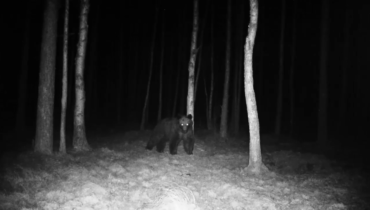
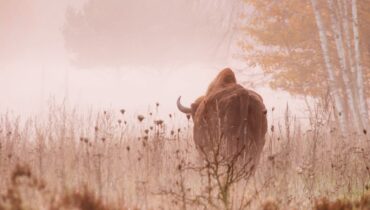
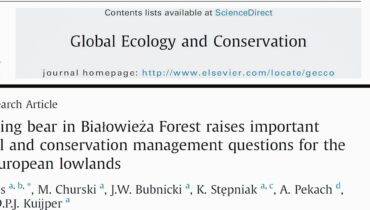
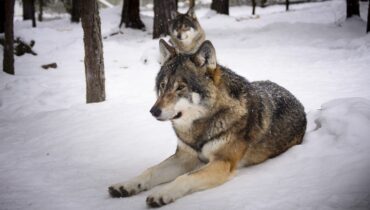
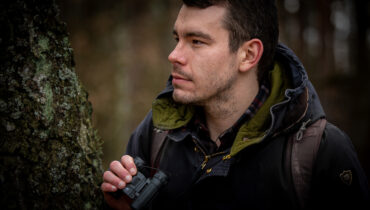
Xavier Fenoy-Martinez
Hello,
One morning of august 2020, my wife and i were walking the forest between the road Narewka-Bialowieska and the restricted zone when a wolf showed up 50m in front of us, crossing the path..
As he/she didn’t see us at first but could well smell us , he kept on making circles, about 50-100m away from us while sniffing constantly the ground.
We were standing motionless.
After about 1 minute like that, he headed straight towards us: 50m, then 30m, until he saw us.
At that stage, he got scared and ran away, tail between the legs.
He stopped suddenly as he was around 100m away, looked back at us a last time ( i could then take a photo through branches just in time) before desappearing for good.
So, yes, as you comment it here above, wolves have a very poor sighting.
Anyway, like probably to all those ones who ever saw the wolf in the wild, we are not about to forget that moment.
Even further, this made us feel like going back to Bialowieza next year!
All the best
Xavier en Inge
Jerzy Barbarski
Hi, is it possible that the growing number of wolves may become a threat to domestic animals such as cattle, horses or even dogs? Do You have any information on the direction of movement of wolves toward the surrounding areas because of the growing number of them? According to my observations ( I’ve been regularly visiting Białowieża Primaeval Forest for 50 years, I;m a forester) the wolves there, are increasingly less afraid of people. Have You come to a similar conclusion? Can You share any information on the habitat of wolf packs roaming south of the Leśna river? Hope I’m not troubling You too much, with regards, George Barbarski.